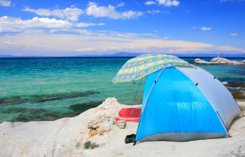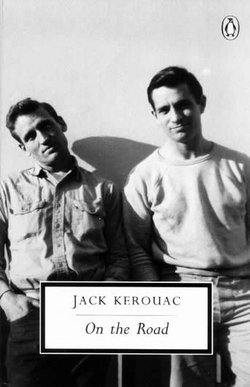
A traditional Lakota Inipi ceremony will be lead by Veteran Sun Dancer and Tokala Warrior, Joshua Mack. If you are being called to come together in a good way, to purify, lift up your prayers and intentions, share and heal, then answer the call.
The ceremony will be followed with a Full Moon drumming circle!
This will be a drug and alcohol free event, as to honor the Lakota tradition, the Canyon and ourselves in being totally present in our experience. Sweat, surrender, soak and sing! A’ho Mitakuya Oyasin! (We Are All Related).
This experience is a combination celebration, ceremony and Baja Trek.
If you have never been to Guadalupe Canyon Oasis it is truly amazing.
Day 1- Trek & Soak
We'll meet at the border if you are coming on the Gus the Beach Bus and drive east through the back country into northern Baja California.
On the way, we'll stop for supplies and a few tasty tacos in one of the smaller towns we meet on our journey. Then we'll head east on through the high desert chaparral and through some of the most awe inspiring rock gardens found on the west coast. The beauty alone will be enough to make us stop and gaze out over the majestic valley floor thousands of feet below before descending into what appears to be a whole other world.
Our experience continues as we turn from the pavement onto the road-less-traveled. The mid afternoon's warm sun will find us driving over the ancient dry lake bed of Laguna Salada. The dry lake bed is cradled for 60 miles to the west by the Pine tree-covered Sierra de Juarez mountains and the craggy peaks of the Sierra de Los Cucapah range to the east. After a final slow crawl up the rugged dirt road that leads to the hot springs, we'll sit down to a great dinner next to the campfire and soak our weary bones in the geo thermal hot springs.
Day 2- Drum, Sweat and Soak
December 10th is a full moon so bring your drum and celebrate with us while we beat to the earth's glory.
The new sweat lodge at the hot springs has not been used yet. This seems like the perfect opportunity to celebrate, purify, share and heal the energies that have come together to create such a unique place on this planet that we share.
We will greet our beautiful morning in the Canyon with breakfast and a soak. We will then gather at the Lodge to prepare the Sacred Circle and Fire, dress the Lodge and sit around the Fire for teachings, sharing and intentions, and making of prayer ties. We will crawl into Lodge before dark and come out into the evening, re-birthed, to share in a Wopila Feast, followed by a Full Moon Drumming Circle to launch our Love, Joy and Gratitude to Canyon de Guadalupe and her Ancestors!
Afterward, the hot springs will be patiently awaiting our presence to assist us in processing and integrating all of the beautiful gifts and experiences that we have shared.
Please understand that this will take a group effort to accomplish all that needs to be done for this ceremony to take place, and that each one of us will get out of the experience precisely what we put into it. In giving is receiving. It is also traditional to bring a small gift for the Fire Tender and anyone else you may care to share with. A pouch of Tobacco wrapped in a red cloth is traditional, but anything that comes from the heart is a beautiful way to show your gratitude to the Fire Tender for their hard work and focus.
There is no charge for the ceremony itself. Any Love-Donations will go toward to the costs of firewood, tools, blankets, and all that is needed to facilitate ceremony.
What to bring:
Loose tobacco for prayer ties and gifting
Two towels
Clothing must be 100% cotton
Men - sweat shorts
Women - a sarong or sundress
A great attitude, open heart, desire to help and willingness to surrender.
***If you have any surplus blankets to donate to the Lodge it would be greatly appreciated!***
Day 3- Mud Baths?
After a morning soak and a big Baja breakfast we'll begin our slow crawl back to civilization. We'll take our time and slide through a few smaller villages to sample the food and experience a bit of local culture.
Back at the border, we'll wave goodbye to our new friends, swap contact info and long for the next adventure. See you soon, amigos!
"My favourite thing is to go where I've never been." ~ Diane Arbus




















